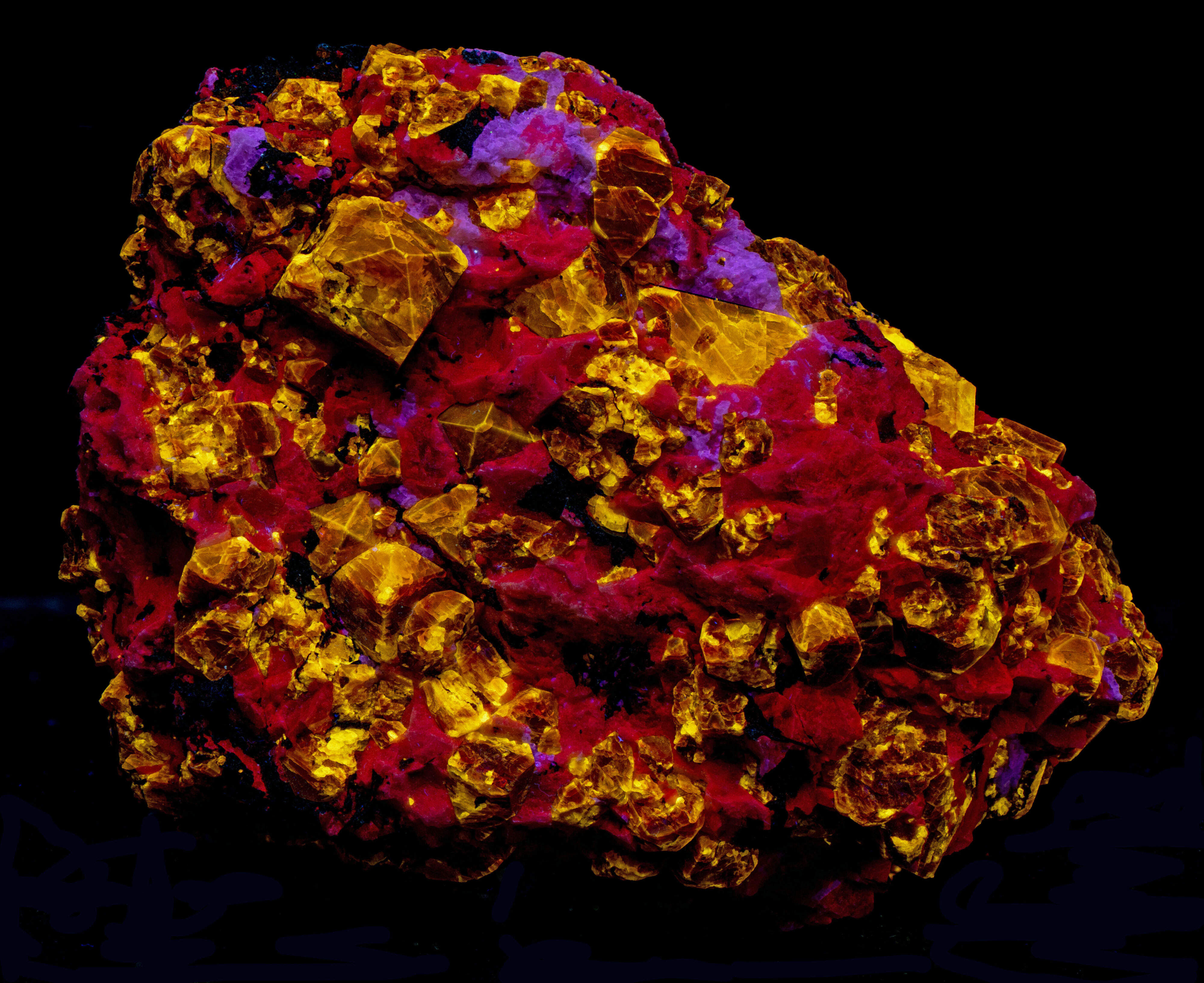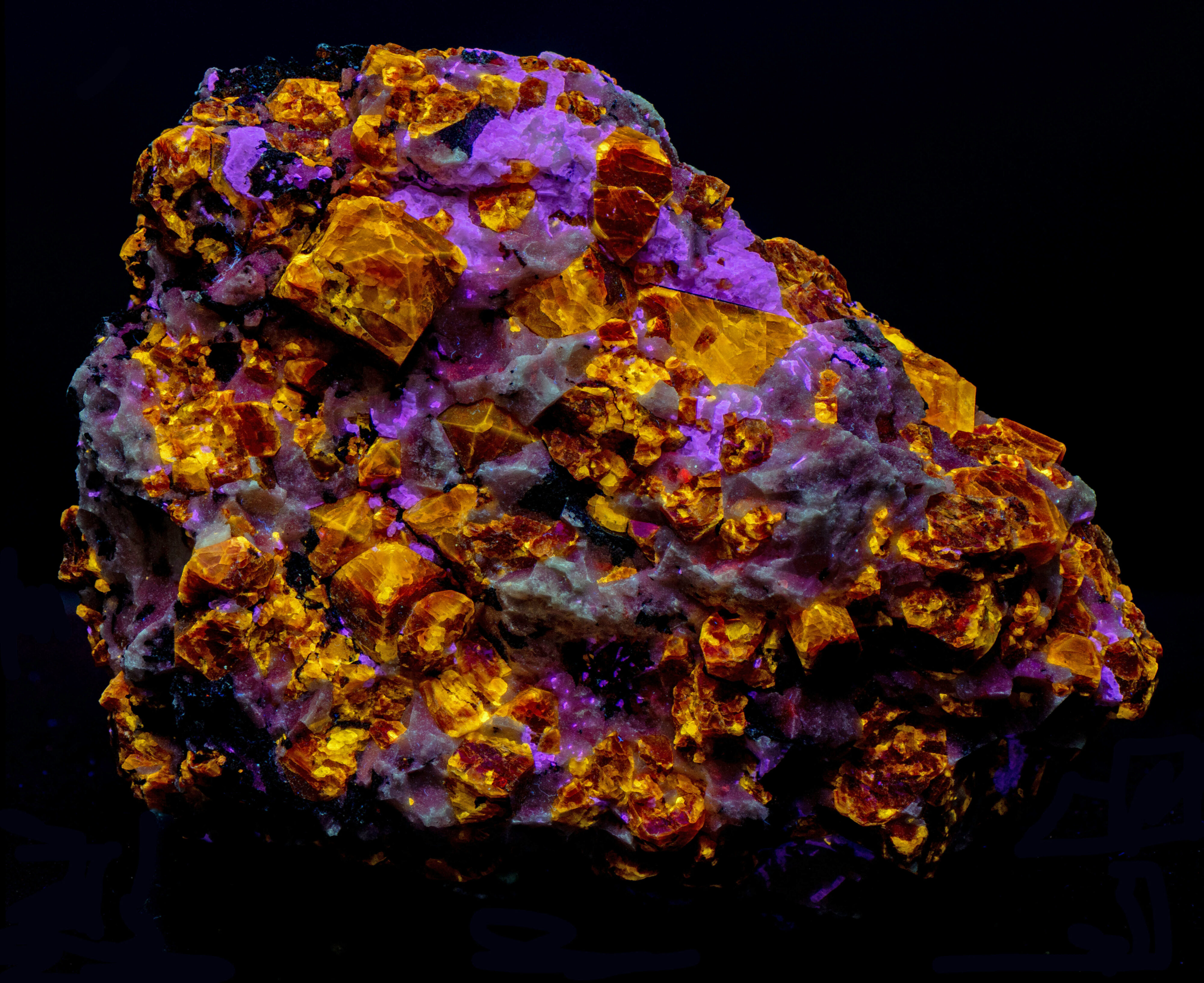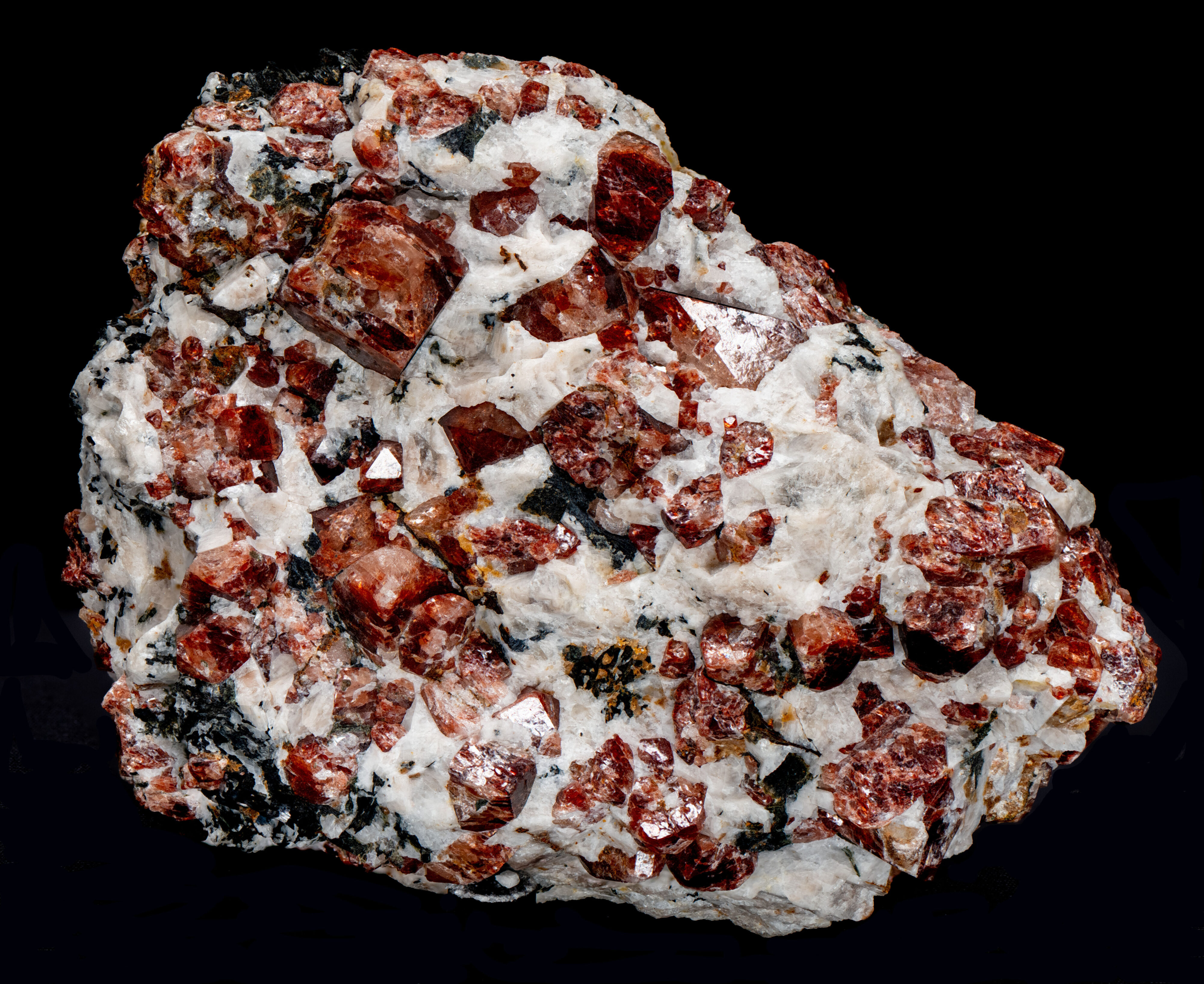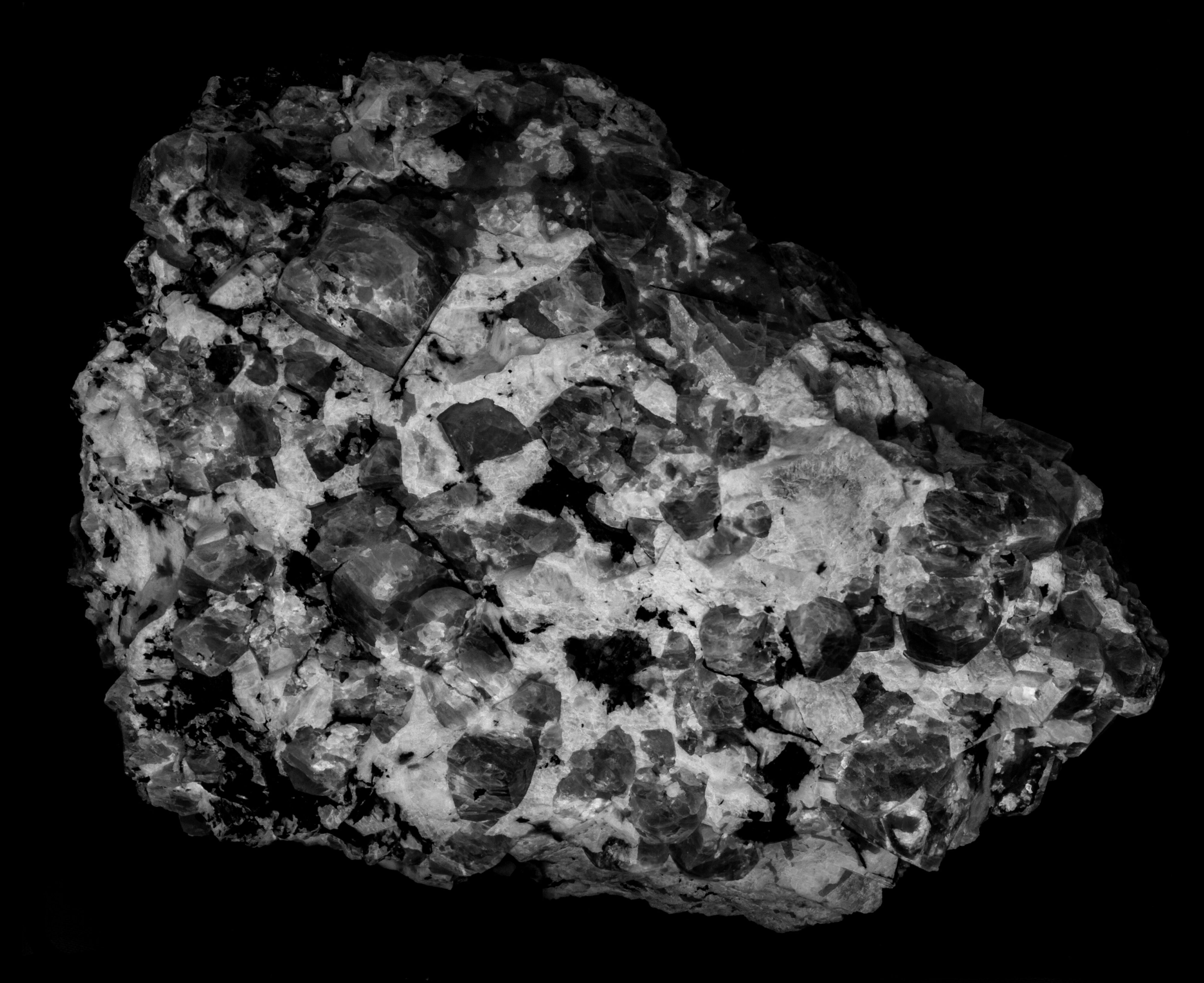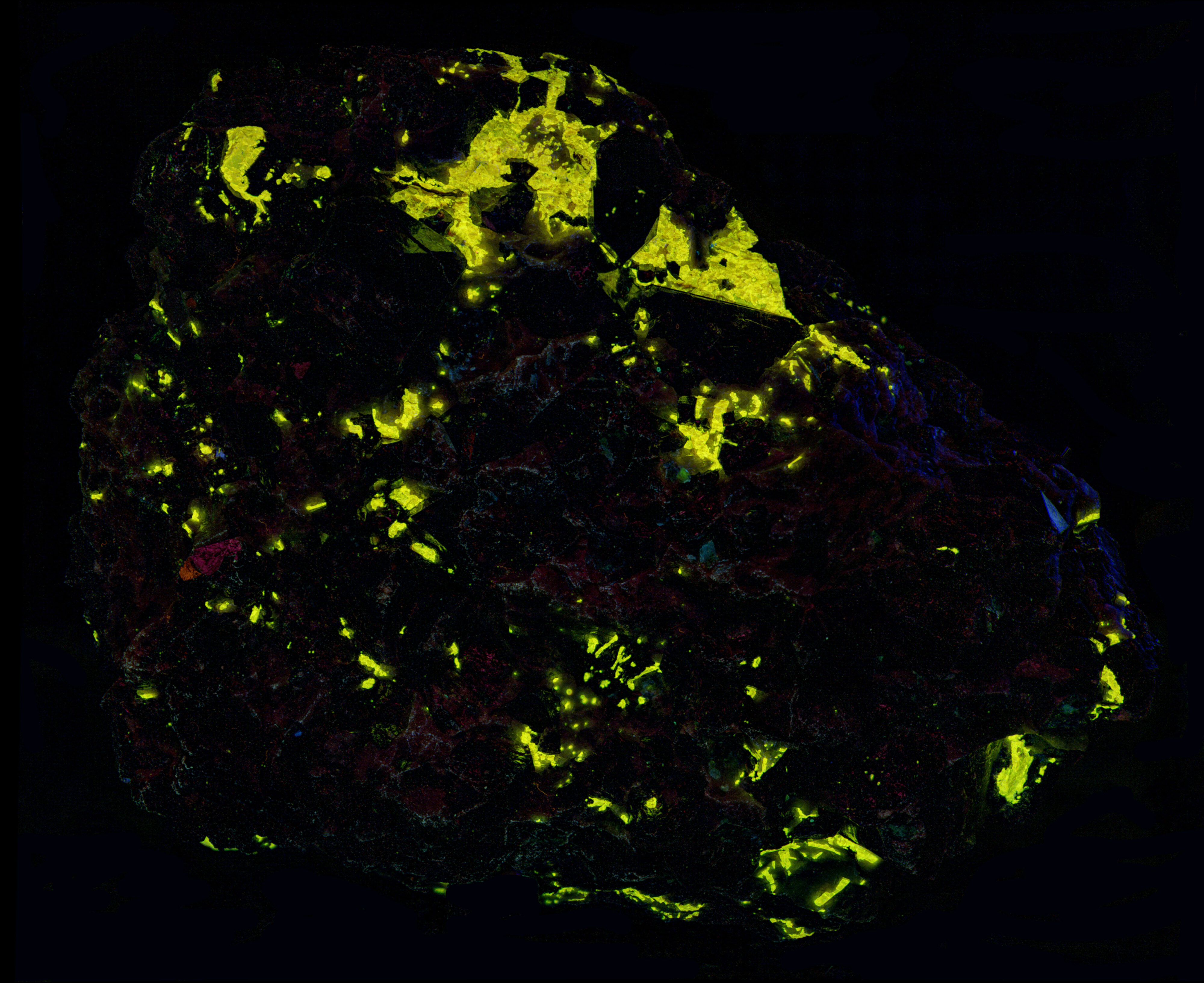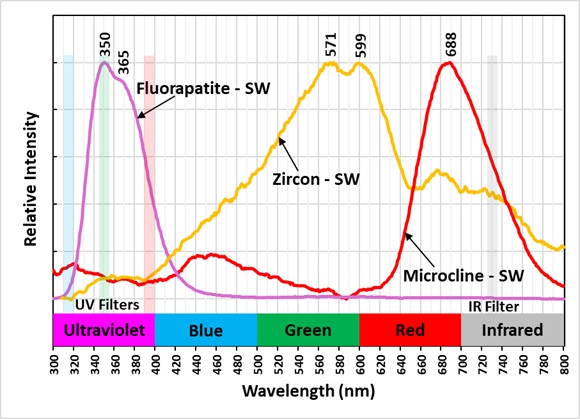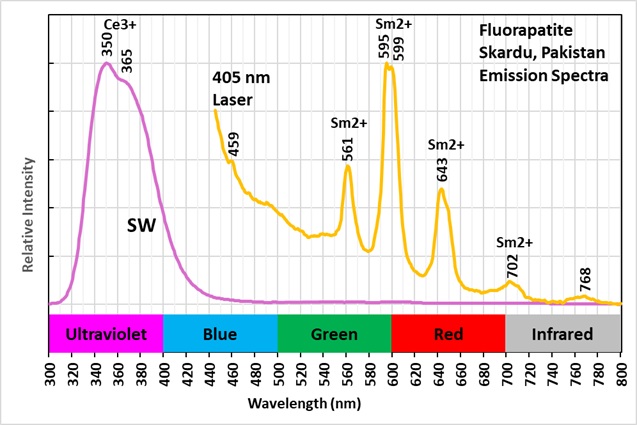Zircon, Microcline and Fluorapatite from Skardu, Pakistan
Contributed by: Michael Crawford
Date: Aug 11th, 2025
Locality: Skardu Area, Gilgit-Baltistan, Pakistan (See on Mindat)
Size: 8 x 9 cm
Description:
This is three-color specimen from the Skardu area, Pakistan. This specimen contains zircon, microcline and fluorapatite. The zircon fluoresces yellow under midwave and shortwave UV light. The emission spectrum of the yellow zircon fluorescence has two peaks (571 nm and 599 nm). Online references for the activation of zircon provide no definitive answer. It is probably activated by rare earth elements.
The microcline fluoresces red under shortwave UV light and is non-fluorescent under longwave and midwave UV light. The shortwave emission spectrum of microcline peaks at 688 nm and its fluorescence extends into the near infrared. The near infrared image shows the microcline as bright white areas. Zircon also has some near infrared fluorescence, but it is medium gray in the near infrared image.
The fluorapatite fluoresces violet under midwave and shortwave UV illumination. It is brightest under midwave light. Fluorapatite also fluoresces in the ultraviolet region. The shortwave fluorescence of fluorapatite is considerably brighter in the ultraviolet compared to its visible fluorescence. The violet fluorapatite fluorescence we see is the shoulder of the ultraviolet peak that extends into the visible region. Cerium is the likely activator of fluorapatite ultraviolet fluorescence. When the fluorapatite is illuminated with a 405 nm laser, it fluoresces yellow. The emission spectrum of this 405 nm fluorescence contains several sharp peaks. The position of these peaks indicates that samarium (Sm2*) is activator for the yellow fluorescence.
The last image shows a false color image of the ultraviolet fluorescence. The false color image is composed of images taken with narrow-band filters centered at 394nm, 350nm and 310nm. These filters are shown on the plot of emission spectra. The false color image is composed of the 394nm image assigned to red, the 350nm image assigned to green and the 310nm image assigned to blue. The fluorapatite appears as yellow (394nm + 350nm brightness).
Summary of luminescence responses:
Zircon (Mindat) (RRUFF)
- Fluorescence under Midwave (305nm LED) UV light: Yellow
- Fluorescence under Shortwave (255nm LED) UV light: Yellow
- Fluorescence under Shortwave (255nm LED) UV light: Red
- Fluorescence under Midwave (305nm LED) UV light: Violet
- Fluorescence under Shortwave (255nm LED) UV light: Violet

